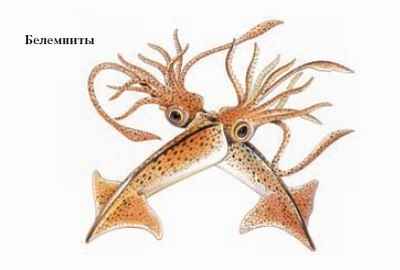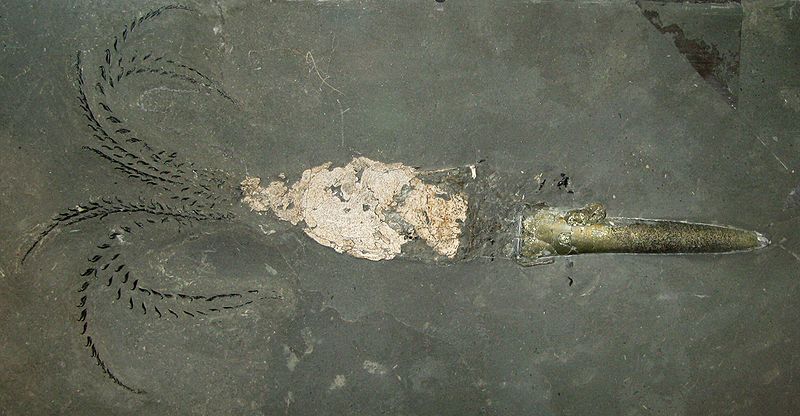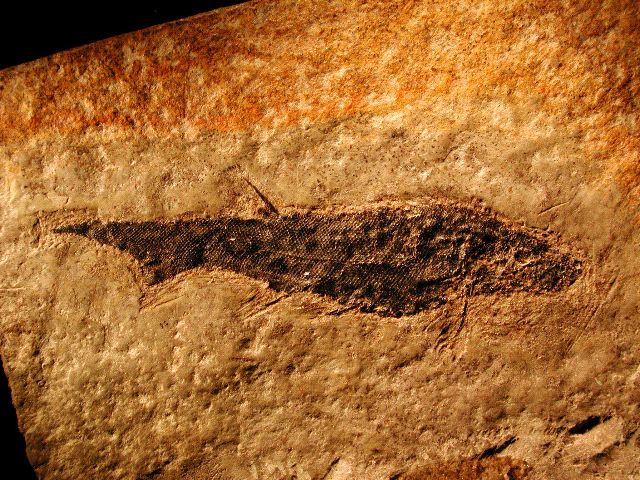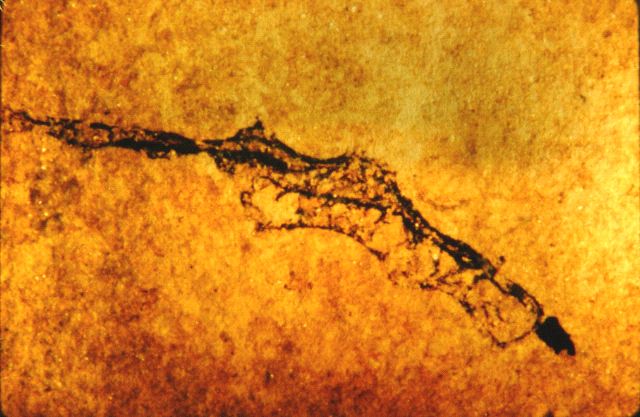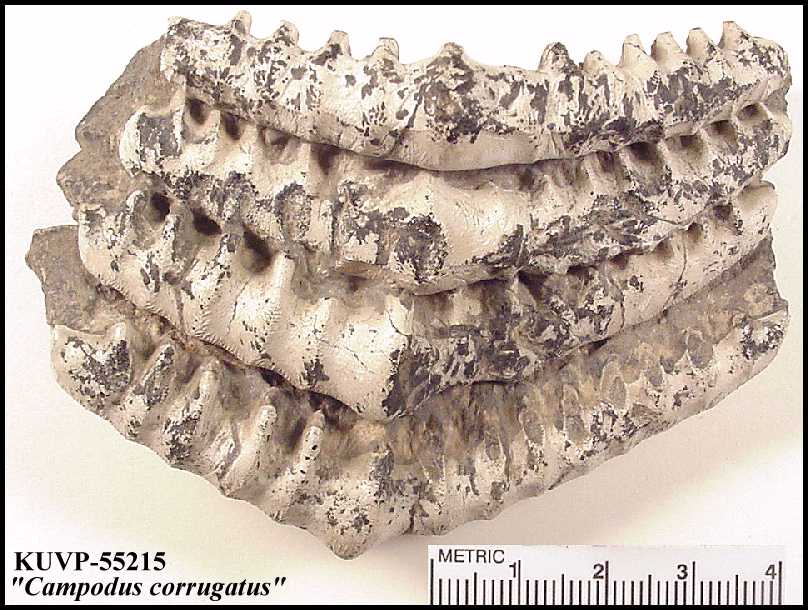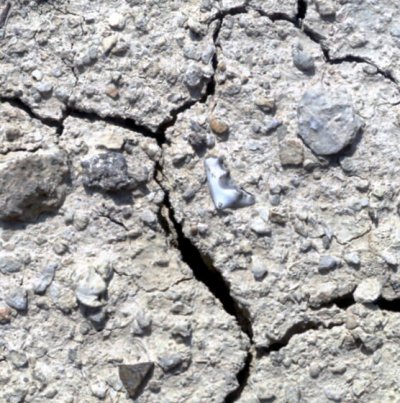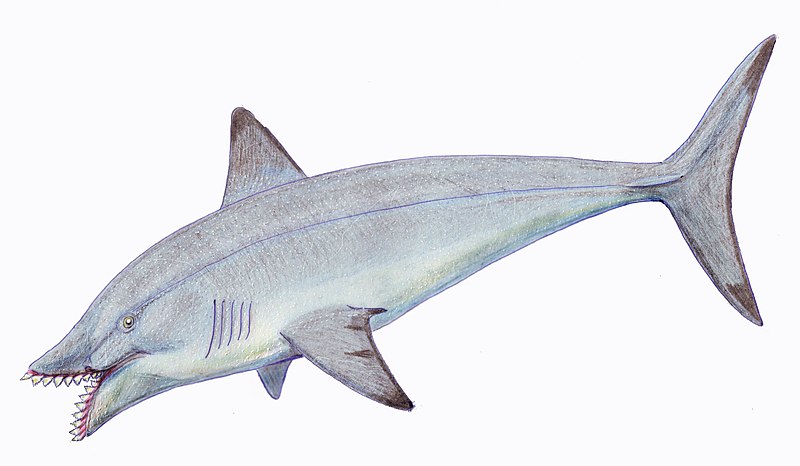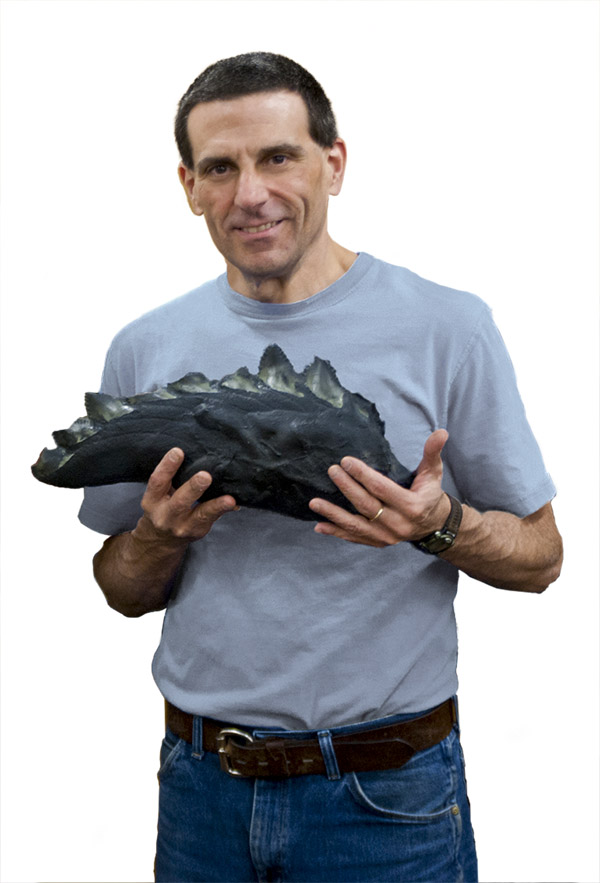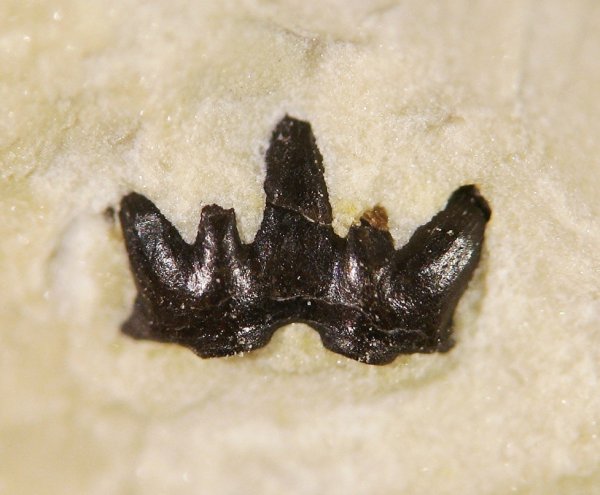[Recent Entries][Archive][Friends][User Info]
October 1st, 2011
| October 1st, 2011 | |
|---|---|
| 05:39 pm [industrialterro] [Link] |
Goniatite Goniatites are extinct ammonoids, shelled cephalopods related to squid, octopus, and belemnites, that form the order Goniatitida. The Gonatitida originated from within the more primitive anarcestine ammonoids in the Middle Devonian some 390 million years ago. Surviving the Late Devonian extinction, goniatitids flourished during the Carboniferous and Permian only to become extinct at the end of the Permian some 251.4 million years ago. They were survived by their cousins the ceratite ammonoids, indirect descendants of the Anarcestida. The goniatites all possessed an external shell, which is divided internally into chambers. The animal lived in the largest of the external chambers, and the internal chambers would have been filled with gas, making the animal buoyant in the water. The general structure of the goniatites would have been similar to that of their relatives the ammonites, being a free swimming animal possessing a head with two well developed eyes and arms (or tentacles). Goniatite shells are small to medium in size, almost always less than 15 centimeters (6 inches) in diameter and often smaller than 5 centimeters (2 inches) in diameter. The shell is always planispirally coiled, unlike those of Mesozoic ammonites in which some are trochoidal and even aberrant (called heteromorphs). Goniatitid shells vary in form from thinly discoidal to broadly globular and may be smooth or distinctly ornamented. Their shape suggests many were poor swimmers The thin walls between the internal chambers of the shell are called the septa, and as the goniatite grew it would move its body forward in the shell secreting septa behind it, thereby adding new chambers to the shell. The sutures (or suture lines) are visible as a series of narrow, wavy lines on the surface of the shell. The sutures appear where each septa contacts the wall of the outer shell. The typical goniatitid has a suture with smooth saddles and lobes, which gives the name "goniatitic" to this particular suture pattern. In some the sutures has a distinctive "zigzag" pattern Not all goniatitid ammonoides have goniatitic sutures. In some the sutures are ceratitic, in others, even ammonitic. Nor are goniatitic sutures limited to the Goniatidia. The sutures of nautiloids are by comparison somewhat simpler, being either straight or slightly curved, whereas later ammonoids showed suture patterns of increasing complexity. One explanation for this increasing extravagancy in suture pattern is that it leads to a higher strength of the shell. Ecologically, goniatites were limited to environments of normal-marine salinity—as appears to be the case for all cephalopods throughout their history. Goniatites are much more abundant and speciose in rocks understood to represent cratonic (also called epicontinental or inland) sea sediments than they are in rocks understood to represent open ocean sediments. Within these inland seas, goniatites' greatest abundance and diversity appears to have been achieved in offshore deep ramp and basinal environments rather than in nearshore environments. Known nearshore (e.g., lagoonal) occurrences have generally been ascribed to wash-in of shells from offshore waters. Due to lack of strong evidence for any particular life mode (e.g., nektonic, planktonic, demersal, planktivorous, piscivorous), it remains unclear what resources goniatites were capitalizing on in these offshore environments. Only a few goniatites' full trophic apparatuses have ever been described, and reports of stomach contents in these creatures' fossils remain questionable at best. However, goniatites clearly lacked the calcified jaw apparatuses developed later in ammonoid history by the ammonites; this has been cited as evidence against a durophagous (shell-crushing) diet for goniatites.
Tags: Аммониты, Вымершие беспозвоночные, Карбон |
| Time | Event |
| 05:54 pm [industrialterro] [Link] |
Aenigmatoceras Aenigmatoceras is a genus of ammonite cephalopod from the Carboniferous of Russia. It is tentatively placed within the family Cravenoceratidae based on similarities with Tympanoceras.
Tags: Аммониты, Вымершие беспозвоночные, Карбон |
| Time | Event |
| 06:01 pm [industrialterro] [Link] |
Belemnitida Белемниты (Belemnitida) — представители отряда вымерших беспозвоночных животных класса головоногих моллюсков. Белемниты существовали с каменноугольного по палеогеновый период. Внешне похожи на кальмаров, но, в отличие от них, имели внутреннюю раковину, состоящую из трёх частей — ростра, фрагмокона и проостракума. Лучше всего в ископаемом состоянии сохраняется ростр белемнита — прочное коническое образование на заднем конце тела. В длину обычно достигали 15—20 см (из среднеюрских отложений Европы известен род Megatheutis, длина ростра которого достигала 50 сантиметров, а общая длина тела белемнита могла доходить до 3 метров). Белемниты обитали в морях, вели хищный образ жизни, большинство белемнитов хорошо плавало. В связи с широким распространением, обилием родов (около 50) и видов, а также их быстрой сменой во времени белемниты служат руководящими ископаемыми для юрских и меловых отложений. Народное название белемнитов — «чёртов палец», «громовая стрела», «стрелы Перуна». В народной медицине используется порошок из белемнита. Считается, что он обладает антисептическими свойствами.
Ископаемые останки (1, 2, 3, 4):
Tags: Вымершие беспозвоночные, Карбон |
| Time | Event |
| 06:14 pm [industrialterro] [Link] |
Triazeugacanthus Триазеугакантус (Triazeugacanthus). Карбон-ранняя Пермь. Не имел зубов. Зубообразные выросты на жабрах, видимо фильтратор. Более 2м. Triazeugacanthus ranged from half a centimetre to six centimetres long, and each fin – with the exception of the caudal fin – contains a stout spine, which is the diagnostic feature of the group. The dorsal fin is set very far back, and the anal fin a little bit more forward. It had pelvic and pectoral fins, and between them a small pair of spines. Like all acanthodians, Triazeugacanthus had an epicercal tail. In 1935, the British paleontologist W. Graham-Smith published his descriptions of a small enigmatic Miguasha species he named Scaumenella mesacanthi. This species seemed closely related to Triazeugacanthus because both were found in equal abundance within some sedimentary layers. The fossils consisted of thin traces of carbon, which led Smith to assume that Scaumenella was a very primitive vertebrate. Other researchers suggested alternative interpretations for the animal, such as ostracoderm larvae, prochordata, or other invertebrates with morphologies similar to vertebrates.
Tags: Акантоды, Вымершие рыбы, Карбон |
| Time | Event |
| 06:24 pm [industrialterro] [Link] |
Belantsea Belantsea montana (named after a legendary ancestor of the Crow Nation) was a peculiar-looking cartilaginous fish that lived during the Lower Carboniferous. Its fossils are found in the Bear Gulch Limestone lagerstätte. Its body was oddly built, being leaf-shaped, with muscular fins and a small tail. Such a bodyplan would allow for great maneuverability, but at the cost of speedy cruising. Its few, large, triangular teeth formed a beak-like arrangement that allowed it to graze bryozoans, sponges, crinoids and other encrusting animals. B. montana is the best known of a group of bizarre cartilaginous fish known as the "Petalodontiformes."
Tags: Вымершие рыбы, Карбон, Хрящевые |
| Time | Event |
| 06:37 pm [industrialterro] [Link] |
Campodus Campodus is an extinct genus of eugeneodontid from the Carboniferous. Campodus may have been a plankton feeder, eating algae and tiny organisms that essentially floated and carried at will by the currents in the near surface ocean waters. Some individual Campodus may have grown to become some very large creatures. Its' teeth do not have the sharp edges that would be suitable for tearing flesh and the tiny ridges across the crown of the tooth do not suggest it was suitable for crushing shells of invertebrates such as brachiopods. A more or less complete specimen in the University of Nebraska State Museum Collections that was collected by the late W. D. "Ted" White that is about one meter long is preserved in black shale, and its largest lateral teeth are about 15 mm wide. Some individual Campodus teeth also collected by Mr. White are over 100 mm wide. These large teeth suggest some very large fish, perhaps as long as 13 m (40 ft). The are also some "V-shaped" teeth that have also been attributed to the genus Agassizodus. Such teeth are called symphysials and they were positioned in the middle of the mouth at the plane of symmetry that extended the length of the fish. Род Campodus, сближаемый с эвгенеодонтами, известен преимущественно по зубам из карбона Северного Полушария. Зубы такого типа характерны и для других представителей группы, но к роду Campodus относят также и скелетные остатки. Интересно, что относительно хрупкие гребни на зубах этого рода могут свидетельствовать о питании мелкими животными. У особи около 1 метра длиной, известной по отпечатку передней половины тела, зубы были 15 мм в поперечнике. В то же время, в коллекциях есть зубы до 10 см в поперечнике! Рыба могла быть 13 метров в длину. Кампод был евгенеодонтидом из карбона. Евгенеодонтиды были хрящевыми рыбами, значит они были родственниками акул. Кампод был огромной рыбой, его длина - около 13 метров! Он известен по зубам, они были найдены в Северном полушарии. Один зуб достигал 10 сантиметров в диаметре! Но кампод ел маленьких животных. Другая рыба была меньше - длиной около одного метра. Но она тоже была камподом. Род "Кампод" включает только один вид - кампод вариабилис.
Tags: Вымершие рыбы, Карбон, Хрящевые |
| Time | Event |
| 06:48 pm [industrialterro] [Link] |
Caseodus Caseodus is the extinct genus of eugeneodontid from the Carboniferous. Казеодонты (Caseodontoidea) — включает в себя семейства Eugeneodontidae и Caseodontidae. Отличаются поперечно-гребенчатыми или вздутыми симфизными зубами. Сюда относится самый полно известный представитель группы — Fadenia из карбона и перми Гренландии и Северной Америки. Это относительно некрупная (до 1,5 метров в длину) рыба. Род Ornithoprion из среднего карбона Индианы — мелкая рыба (череп не более 10-15 см длиной) с необычным нижнечелюстным ростром. По-видимому, в этой группе не всегда формировалась настоящая симфизная спираль или даже развитые симфизные зубные дуги. Среди казеодонтов были очень крупные рыбы — известны челюсти Caseodus до 60 см длиной, что может соответствовать общей длине до 4-5 метров. Всего в надсемейство входят примерно 4 рода, существовавших с карбона по пермь, в основном в Северном Полушарии.
Tags: Вымершие рыбы, Карбон, Хрящевые |
| Time | Event |
| 07:04 pm [industrialterro] [Link] |
Cobelodus Cobelodus is an extinct genus of shark that lived in the Middle to Late Carboniferous period in what is today Illinois and Iowa. Cobelodus was a 2 metres (6.6 ft) long predator. Although it was a shark, Cobelodus had a number of differences from modern forms. It had a bulbous head, large eyes, a high-arched back, and a dorsal fin placed far to the rear, above the pelvic fins. Because of its large eyes, it is thought to have lived in the deeper, darker parts of the sea, hunting crustaceans and squid. Another unusual physical feature of Cobelodus are the 30 centimetres (12 in) long, flexible cartilagenous 'tentacles' sprouting from its pectoral fins. Their purpose is unknown.
Tags: Вымершие рыбы, Карбон, Хрящевые |
| Time | Event |
| 07:12 pm [industrialterro] [Link] |
Delphyodontos Delphyodontos dacriformes was a prehistoric holocephalid fish from the early Carboniferous, from the Bear Gulch Limestone Lagerstätte, in Montana. Its fossils consist mainly of aborted fetuses or newly hatched young. Sharp teeth and fecal matter in the fossils suggests that Delphyodontos practiced intrauterine cannibalism, like some modern sharks, such as gray reef sharks. According to the fossils, the recently born would have resembled tadpoles with small, but sharp beaks. Because of the evidence suggesting intrauterine cannibalism, D. dacriformes is assumed to have been carnivorous, though, besides siblings, it is unknown what other organisms they would have eaten. The generic name, Delphyodontos, means "womb tooth", in reference to the sharp, beak-like teeth and their possible habits of intrauterine cannibalism. The specific name, dacriformes, refers to the teardrop-shaped body.
Tags: Вымершие рыбы, Карбон, Хрящевые |
| Time | Event |
| 07:18 pm [industrialterro] [Link] |
Deltoptychius Deltoptychius is an extinct species of cartaliginous fish related to the modern chimaeras. It lived in the Carboniferous period of present-day Europe. Although it emerged over 300 million years ago, Deltoptychius was similar in appearance to modern-day chimaeras, possessing a long, whip-like tail and large, wing-like pectoral fins that it probably used to glide through the water. Deltoptychius`s large eyes allowed it to hunt in deep waters, crushing shellfish between solid tooth plates in its mouth.
Tags: Вымершие рыбы, Карбон, Хрящевые |
| Time | Event |
| 07:24 pm [industrialterro] [Link] |
Echinochimaera Echinochimaera is an extinct genus of fish, it was assigned to the order chimaera by Jack Sepkoski in 2002. The genus' name derives from the Greek εχινό (echino) meaning spiny, and chimaera. The two known Echinochimaera species lived in the Upper Mississippian (Serpukhovian). Fossils of the species were found in the Bear Gulch Limestone in Montana, United States. Both species have rounded bodies and paddle-like tails as well as large pectoral fins, two dorsal fins and a jaw fused to the braincase. The paddle-like tails indicate that E. meltoni was likely not a predator nor a fast swimmer. Echinochimaera meltoni: E. meltoni was first described by Richard Lund, a Adelphi University palaeontologist, in 1977. The fossils found of E. meltoni have shown a great deal of sexual dimorphism, males being found to have a maximum 150mm body length while the maximum body length found in females was only 70mm (juveniles were 13-20mm). In general, the females only grew to about half the size of the males. Males also had four pairs of spikes which may have been used to defend against predators and to identify the fish as male. There was a relative abundance of immature male fossils found, and that together with the significant sexual dimorphism indicate there was extreme sexual selection among the species. Echinochimaera snyderi: E. snyderi was described, like E. meltoni, by Richard Lund. It was described in 1988 based on juvenile specimens, all with a body length under 90mm. E. snyderi differs from E. meltoni in fin detail as well as jaw shape and teeth near the front edge of the face rather than a tooth plate, in mature specimens later found its mature size was found to be larger than E. meltoni.
Tags: Вымершие рыбы, Карбон, Хрящевые |
| Time | Event |
| 07:42 pm [industrialterro] [Link] |
Edestus Эдестус или эдест (Edestus) — род хрящевых рыб каменноугольной эпохи. Является дальним родственником геликоприона, относится к отряду эвгенеодонтов. Известен в основном по находкам зубов и челюстей. Имел две зубные «дуги», возможно, росшие на симфизах верхней и нижней челюсти. Вероятно, дуги торчали далеко вперед из пасти. Самые старые зубы находились у конца дуги, молодые — у ее основания. В отличие от геликоприона, зубная «спираль» не образовывалась. Коронки зубов на дугах расширены у основания, так называемые «шпоры» направлены назад. Истинное положение зубных дуг достоверно не известно, есть мнение, что это глоточные зубы. Судя по всему, рыба выглядела так, словно на морде у нее растут зазубренные ножницы. Назначение столь неуклюжего зубного аппарата остается совершенно непонятным. Интересно, что боковые («обычные») зубы часто описывают как давящие, хотя их могло вообще не быть. Неясно, могли ли дуги плотно смыкаться. Предполагается, что эдестус был хищником. Он даже сравнивается с современными ламноидными акулами (тахипелагический охотник за крупной добычей). Если так, то это самая крупная хищная рыба своего времени. Судя по остаткам вида Edestus giganteus (поздний карбон Северной Америки — Оклахома), длина эдестуса могла доходить до 6 метров. Высота зубных коронок этого вида доходит до 8 см. Всего описано примерно 5 видов, из среднего карбона — ранней перми Европы (в том числе России) и Северной Америки. Синонимы рода — Edestodus, Protospirata. Edestus giganteus, (also known as the "scissor-tooth shark") lived in the oceans during the Late Carboniferous (306-299 million years ago). Little is known about E. giganteus apart from a single set of teeth currently housed in the American Museum of Natural History in New York City. Paleontological studies suggest that E. giganteus, unlike modern-day sharks, did not shed worn or broken teeth. Rather, it continued growing new teeth and gums near the back of the mouth, eventually pushing the older teeth and gums forward, until they protruded from the mouth. It is not clear what function the strange teeth performed. E. giganteus grew to about the size of the modern-day great white shark, thus probably making it one of the top sea predators of its day. As with all other members of the genus, it is not clear how E. giganteus caught or ate its prey, however.
Ископаемые останки (1, 2, 3, 4, 5, 6):
Tags: Вымершие рыбы, Карбон, Хрящевые |
| Time | Event |
| 08:04 pm [industrialterro] [Link] |
Falcatus Falcatus is an extinct genus of Falcatidae which lived during the early Carboniferous Period in Bear Gulch bay and what is now Missouri. It was a 25-30 cm or 10-12 inches long "cladodont-toothed stethacanthid shark". The first material known from the genus were the prominent fin spines that curved anteriorly over the head of the animal. When first described in 1883 from the St. Louis Limestone, these remains were given the name Physonemus falcatus. However, in 1985, fossils of a new type of condrichthyan from Montana were described that displayed a high degree of sexual dimorphism. The same spines that were previously named P. falcatus were found on one of the morphs, identified as the male due to the presence of valvae. As a result the present generic name was constructed for the species as well as the related F. hamatus and F. proclivus.
Tags: Вымершие рыбы, Карбон, Хрящевые |
| Time | Event |
| 08:12 pm [industrialterro] [Link] |
Glikmanius Glikmanius (formerly Cladodus) is an extinct genus of shark which lived in the Carboniferous of North America and Russia. The genus is based on a whole specimen from Nebraska, USA. Glikmanius is named in honour of the Russian palaeontologist, Dr. Leonid Glikman, who studied the genus and was "the first to propose its ctenacanthiform affinity".
Ископаемые останки (1, 2, 3, 4):
Tags: Вымершие рыбы, Карбон, Хрящевые |
| Previous Day | 2011/10/01 [Archive] |
Next Day |






